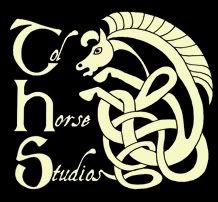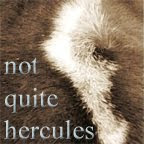So, this is going to be a discussion on Dressage/Riding as art. I'll try not to be too equestrian inclusive, though.
I borrowed a book from the local library on various dressage training strategies. It's supposed to be one of the best manuals in print for discussing techniques. I must say I find that title a bit misleading so far, but I am not finished with it yet. Anyway, right in the beginning, I found an interesting passage that I both agree and disagree with, both in terms of its discussion on "the artist" and on "the rider as artist."
"All art is based on the knowledge of its traditions and history, and a full mastery of its techniques as well as the usage of its tools. Riding, as an art, is no different. Riding, even on the level of great mastery, is still just a skill. Art is based on, yet goes beyond, these skills. The rider who has only skills is a sportsman and might feel that calling riding an art is either pretentious or offensive.De Kunffy's writing both struck me and intrigued me. This is the first time I've ever heard a leading, well-awarded trainer/rider actually discuss the spiritual (in this case "artistic") aspect of riding. I like to consider it spiritual, because I encounter the same feeling on personal spiritual journeys and experiences. But it is much intensified when experienced through riding. I think because when I have those moments while riding, I'm not--as de Kunffy suggests--unaware of my horse but somehow merged soulfully with him. I've had moments so intense that for a few strides not only do I feel the "energy and force [that is] greater than human, greater than equine," but just as that energy dissipates and the world is foggily within my awareness, I experience the world simultaneously from his perspective as well as my own--I am not just rider feeling horse beneath, but horse feeling rider and ground, as well as through sight and sound. It is very difficult to explain, and typically I feel that either no one would believe me or otherwise think I've lost it more than I typically have.
Many outstanding competitors are well skilled sportsmen. Fewer are artists, and so it should be. The craftmanship of riding, the equestrian sport, is infatuating and often irresistible. Its pursuit is often seen in the show rings and at competitions. The art of riding is sometimes resplendently displayed in the competition arena, but, being sufficient unto itself, is more often part of the everyday existence of its masters.
Observe, if you will, a horse and its rider, combined into one harmonious unit, oblivious of their surroundings. Both horse and rider seem to be in a daze or in a state of meditation, attuned to something the spectator cannot detect. They are joined in a limitless harmony without being obviously aware of each other. They appear to be attuned solely to an outside third force, an inspiration, that brought them together. The pair has beauty, for its energy and force are greater than human, greater than equine." (De Kunffy, Charles. Training Strategies for Dressage Riders. Emphasis my own.)
Most trainers and riders, when describing any experience like this, simply describe it like any athlete describes the "zone" of hyperalert senses and impeccably tuned focus. Yes, de Kunffy could be describing his own version of an athlete's "zone," but I think I wouldn't be alone in believing that he is talking about something much deeper than that.
So what do I disagree with? His apparent attitude on the connection between art, mastery, and this artistic/spiritual phenomenon. "All art is based on...the full mastery of its techniques as well as the usage of its tools." De Kunffy, like many before him, seem to posit that Artists (that is, real artists) are only those individuals that are undebated masters of their craft. Thus, only masters can truly experience what he describes. This I have a big problem with. First, I think 90% of artists (photographers, painters, sculptors, musicians, whathaveyou) would fall short of the Master title within their field. Second, I've experienced this very same artistic/spiritual phenomenon and I think anyone at my barn would agree with me that while I'm a good rider, I'm far from being a master rider. Especially when it comes to dressage.
Yes, perhaps I'm reading into it a little too far. De Kunffy does seem to think rather highly of himself, perhaps even elitist in mentality. But he also goes into some discussion about how equestrian artists are less concerned with ribbons (ie proving their ability) and more concerned with simply seeking that connection. In other words, a rider doesn't have to be accomplished to be an artist of this sort.
Well, perhaps this has turned into a large ramble. I mostly wanted to share the quotes. One more for you:
"The skills that contribute to and promote harmony are many. They can be taught to riders. However, the sensitivity to and awareness of harmony, and the desire for it, cannot be taught, merely inspired in others...But there are those who understand and seek harmony and live by its ethics, and they naturally toward those efforts in riding that lead to total harmony, and thus the art of horsemanship."











